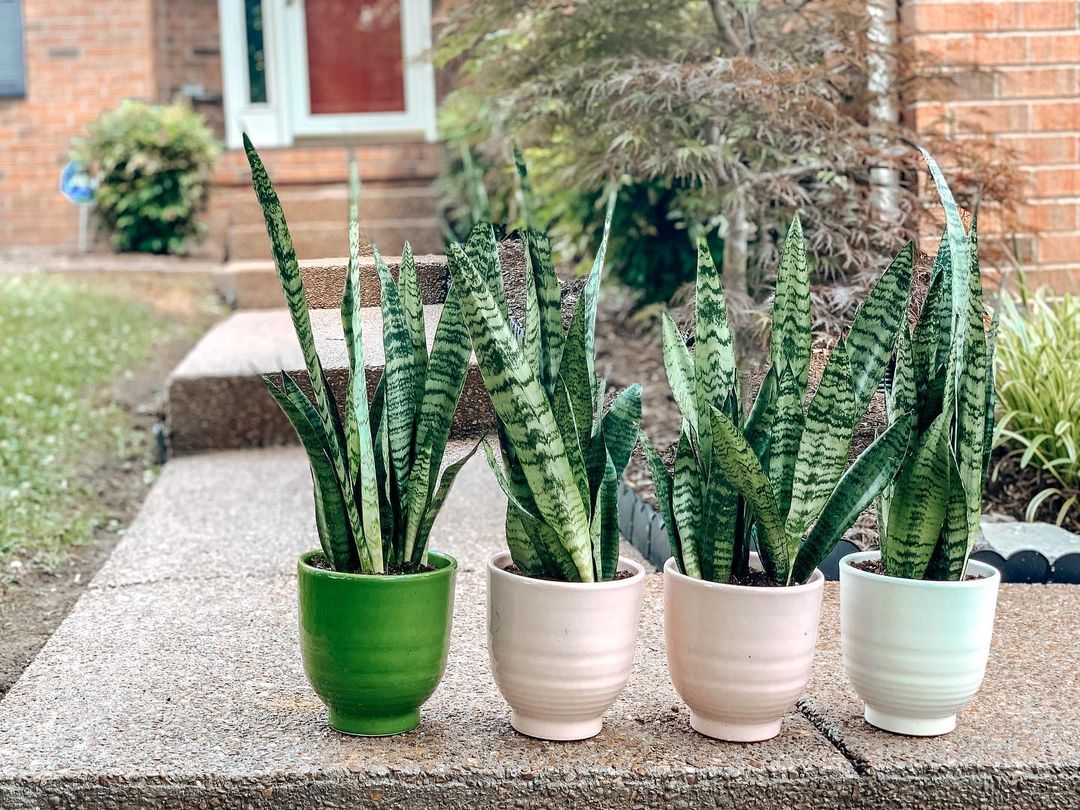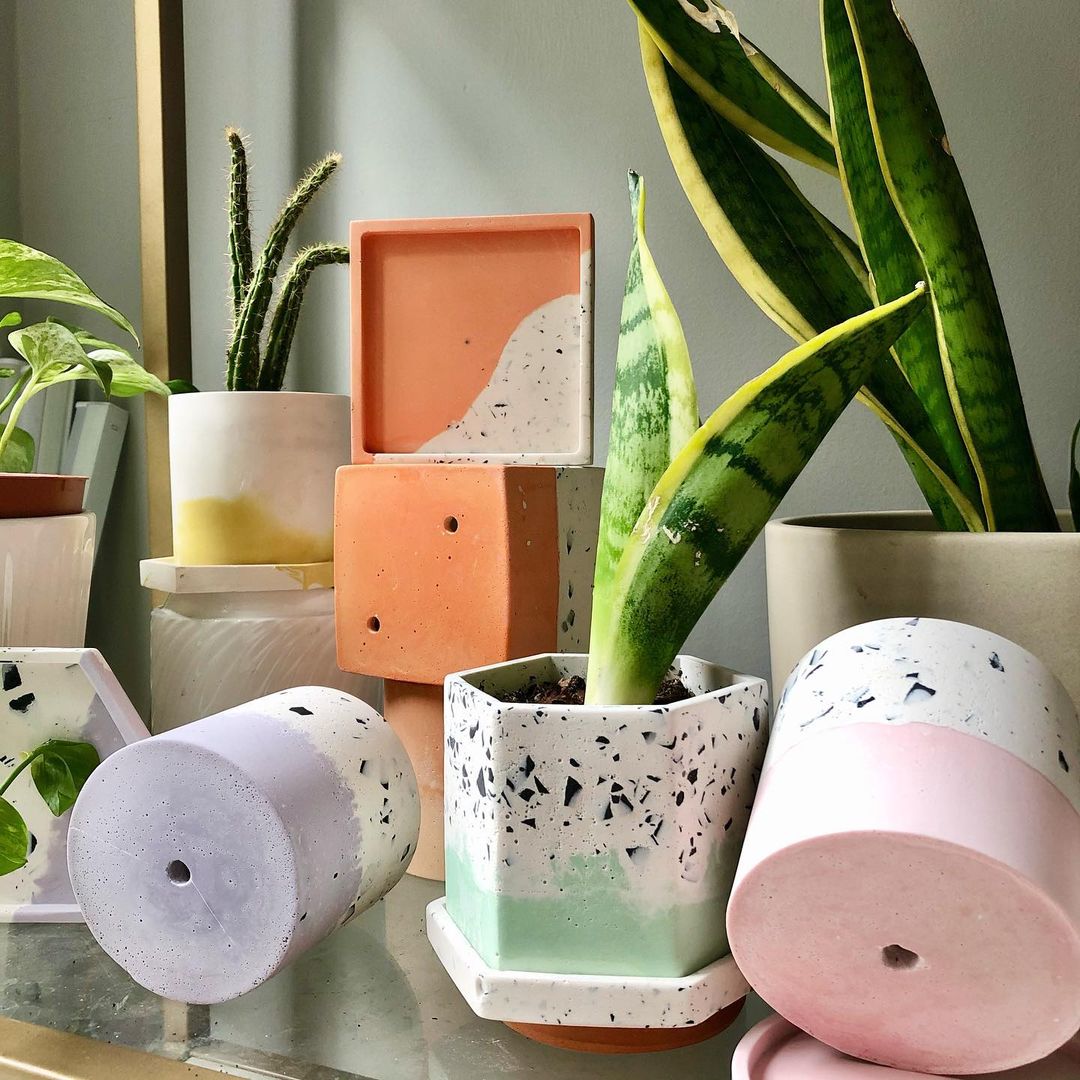Curious to know, Can a Snake Plant Live Outside? Find Out the answer to this question in this extensive guide.
Can a Snake Plant Live Outside? Find Out and explore the possibilities. In this article, we’ll delve into outdoor snake plant care, revealing what it takes for these popular indoor houseplants to thrive in an open-air environment.
Find Do Snake Plants Need Drainage Holes?
Can a Snake Plant Live Outside?
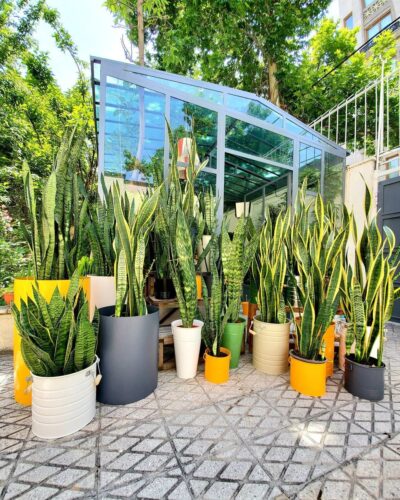
Yes, a snake plant can live outside, but their success depends on climate, sunlight, soil, and maintenance. They are native to tropical regions, so warm and mild climates are ideal. Snake plants prefer partial to moderate sunlight and well-draining soil. Regular inspections for pests and diseases are important. Container gardening is an option in less ideal outdoor conditions. Let’s understand this in detail with below points;
1. Climate Considerations
Snake plants are native to the warm, tropical regions of West Africa. They have evolved to thrive in consistent warmth and a distinct lack of frost. When planning to grow a snake plant outside, it is essential to assess your local climate.
Sanseveria thrives in temperatures ranging from 55°F to 90°F (21°C to 32°C). If your region experiences harsh winters or temperature extremes, it may be challenging to grow a snake plant outside. In such cases, it is advisable to plant them in containers or pots that can be moved indoors during unfavorable weather.
2. Sunlight Requirements
Snake plants are known for tolerating low light conditions indoors, but this doesn’t necessarily mean they will thrive in full shade outside. In outdoor settings, snake plants do well with partial to moderate sunlight. Too much direct sunlight can cause leaf scorching, while inadequate light can lead to slow growth and less vibrant foliage. Finding the right balance in sunlight exposure is crucial for growing a snake plant outside.
3. Soil and Drainage
Snake plants require well-draining soil to prevent root rot. They thrive in soil that is rich in organic matter and allows water to flow through without waterlogging the roots. Sandy or loamy soil with good drainage is ideal for growing a snake plant outside. Adequate soil preparation is essential to ensure their survival in an outdoor setting.
4. Watering Regimen
Snake plants are famous for their drought-tolerant nature. While growing a snake plant outside, its watering needs can often be satisfied by natural rainfall, reducing the need for frequent watering.
It’s essential to allow the soil to dry out between watering sessions, as overwatering can lead to root rot, which can be detrimental to the plant’s health.
5. Pests and Diseases
One of the advantages of growing snake plants is their resilience against common pests and diseases. However, they are not entirely immune. Pests like mealybugs and spider mites can occasionally affect snake plants. It’s important to regularly inspect your outdoor snake plants and address any pest problems promptly to ensure their continued health.
6. Container Gardening as an Option
If you live in an area with less-than-ideal outdoor conditions for snake plants, you might consider growing them in containers.
Container gardening provides more control over factors like soil, light exposure, and protection from harsh weather. This approach allows you to maintain your snake plants more effectively, especially in regions with unfavorable outdoor conditions.
Snake Plant Drooping? Find Solution HERE
What to Avoid While Growing Snake Plants Outdoors

Frost and Cold Temperatures:
Snake plants are tropical and cannot tolerate frost or extended exposure to cold temperatures. If you live in a region prone to frost, it’s crucial to bring your snake plants indoors during winter or protect them with frost cloth or covers.
Excessive Sunlight:
While snake plants can tolerate low light indoors, too much direct sunlight outdoors can scorch their leaves. Avoid placing them in full sun; instead, provide partial to moderate sunlight for optimal growth.
Waterlogged Soil:
Snake plants are highly susceptible to root rot if they sit in waterlogged soil. Ensure that the soil drains well, and do not let water accumulate in the plant’s pot or outdoor planting area.
Overwatering:
Snake plants are drought-tolerant and prefer to dry out between waterings. Overwatering can lead to root rot and other issues. Only water when the soil is dry to the touch.
Neglecting Pest and Disease Control:
While snake plants are generally hardy, they can still fall victim to pests like mealybugs and spider mites. Regularly inspect your plants and take action if you notice any signs of infestation.
CHECK OUT Best Companion Plants for Pest Control
Ignoring Soil Quality:
Poor soil quality, such as heavy, clayey soil with poor drainage, can hinder the growth of snake plants. Ensure you plant them in well-draining soil that is rich in organic matter.
Not Providing Adequate Protection:
In regions with strong winds, heavy rains, or hail, snake plants can become damaged. Protect them by placing them in sheltered locations or using windbreaks to shield them from the elements.
Underestimating Extreme Weather:
If your area is prone to extreme weather conditions like hurricanes or severe storms, it’s wise to move your snake plants indoors during these events or ensure they are adequately secured to prevent damage.
Planting in Unsuitable Climates:
In regions with highly unfavorable climates, such as arid deserts or extremely cold environments, it may be best to keep snake plants indoors or in containers to maintain better control over their environment.
Find Are Snake Plants Toxic to Dogs?
How Big Snake Plant Get?
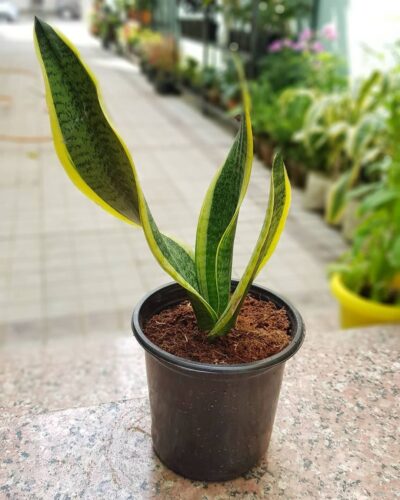
In outdoor conditions, with suitable care and ideal circumstances, snake plants (Sansevieria) can grow up to 8 inches to 12 feet tall. However, the size can vary depending on factors such as climate, soil, variety, and care.
LEARN Growing Snake Plants in Water
Can a Snake Plant Live Outside in the Winter?
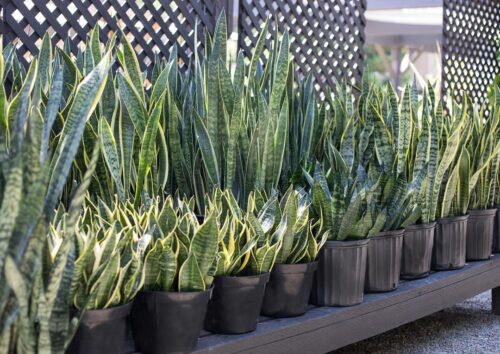
A Snake plant is not frost-resistant and cannot live outside during winter in areas where frost or freezing temperatures are common. They are tropical plants and should be brought indoors or protected from freezing conditions to ensure their survival.
READ about Night Owl Snake Plant Care
What Temperature Can a Snake Plant Tolerate?
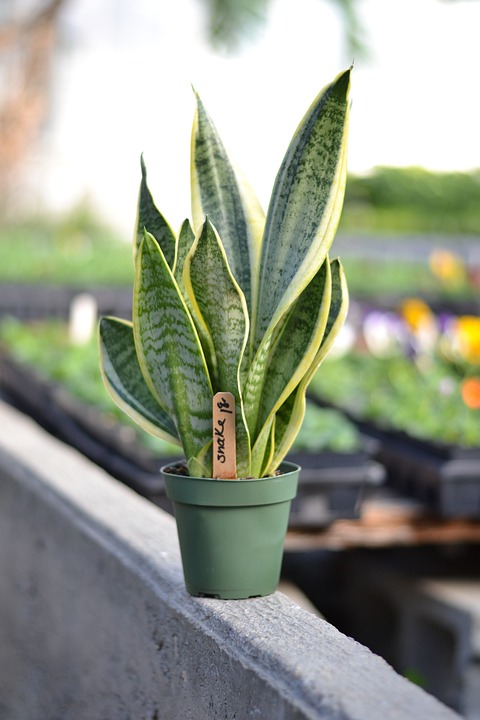
Snake plants (Sansevieria) thrive in temperatures between 55°F to 90°F (21°C to 32°C). They can tolerate slightly lower and higher temperatures for short periods. However, they are not frost-resistant and should be protected from freezing temperatures, as prolonged exposure to cold can harm the plant.
TIP: To ensure the well-being of your snake plant in regions with temperatures consistently at or below 50 F, it’s advisable to grow it in a greenhouse or a location where it can receive sufficient warmth and protection from the cold.
LEARN How to Force a Snake Plant to Bloom
Can a Snake Plant Live Outside in Summer

Yes, a snake plant can live outside during the summer months. They tolerate warm temperatures and can benefit from the abundant sunlight and fresh air. However, it’s crucial to ensure they are protected from extreme heat and intense sunlight and to provide proper watering and care during the summer to prevent leaf damage or dehydration.
Find the Best Snake Plant Soil Recipes
FAQs
Q. Should snake plants be planted in the ground or in pots when outdoors?
Both options are viable. Planting in the ground can work if the climate is suitable. Alternatively, growing them in pots or containers offers more control over their environment and protection from harsh conditions.
Q. Can snake plants be exposed to direct sunlight when grown outside?
While snake plants can handle some direct sunlight, it’s best to provide partial to moderate sunlight to prevent leaf scorching.
Q. Are snake plants suitable for all outdoor climates?
Snake plants are best suited to warm and mild climates. In regions with extreme cold or adverse weather conditions, it’s recommended to grow them in containers for better control.
Q. Can a snake plant live outside year-round in tropical regions?
In tropical regions with consistently warm temperatures and no risk of frost, a snake plant can live outside year-round and may thrive.
LEARN Growing Spider Plants Outdoors

